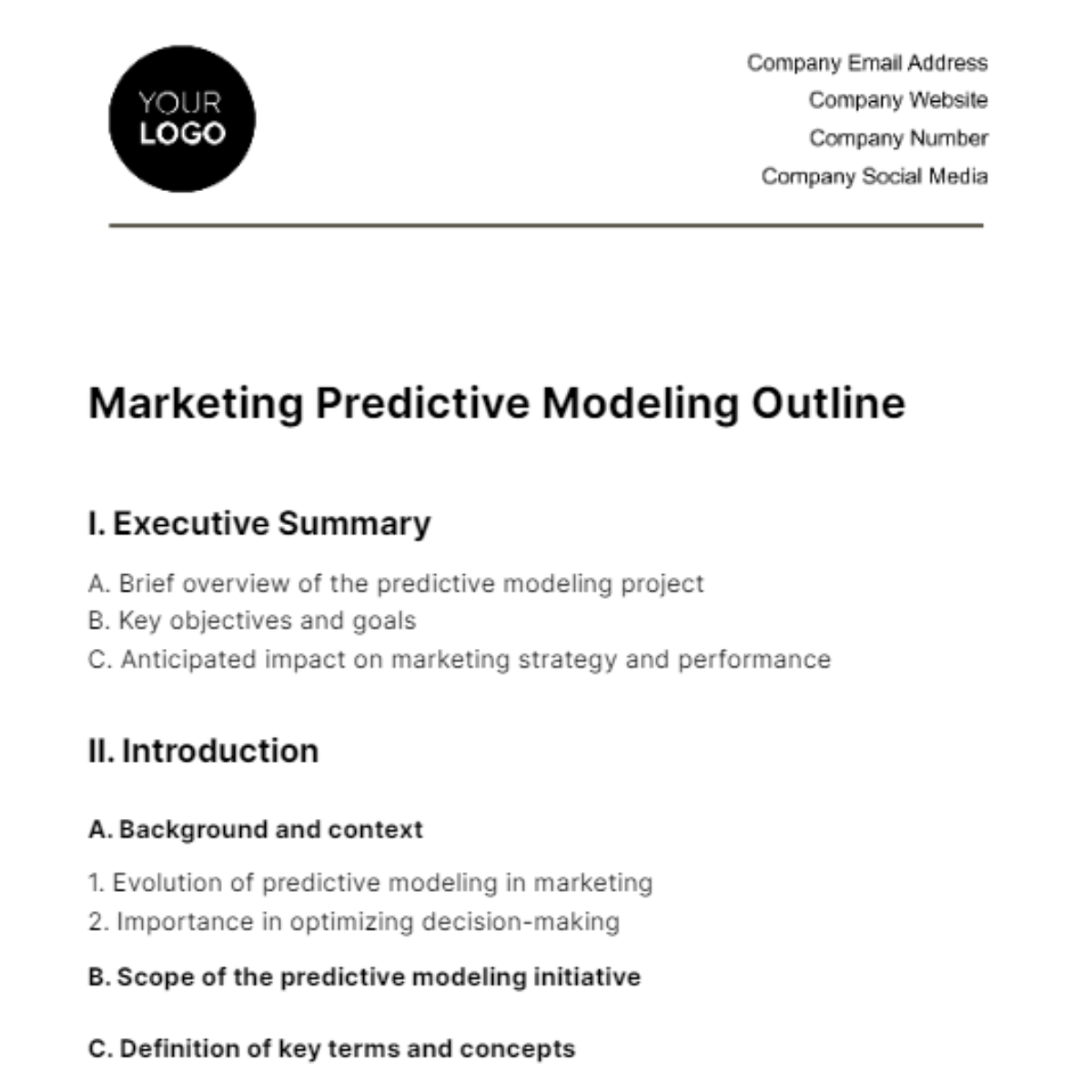Marketing Predictive Modeling Outline
I. Executive Summary
A. Brief overview of the predictive modeling project
B. Key objectives and goals
C. Anticipated impact on marketing strategy and performance
II. Introduction
A. Background and context
1. Evolution of predictive modeling in marketing
2. Importance in optimizing decision-making
B. Scope of the predictive modeling initiative
C. Definition of key terms and concepts
III. Objectives and Goals
A. Specific marketing challenges to be addressed
B. Measurable goals for predictive modeling outcomes
C. Alignment with overall marketing and business objectives
IV. Data Collection
A. Identification of relevant data source
1. Internal data (CRM, sales, customer feedback)
2. External data (market trends, competitor analysis)
B. Data quality assessment and cleansing procedures
C. Data privacy and compliance considerations
V. Data Preprocessing
A. Exploratory data analysis (EDA)
1. Summary statistics
2. Data visualization
B. Feature engineering and selection
C. Handling missing or outlier data
VI. Model Selection
A. Choice of predictive modeling techniques
1. Regression analysis
2. Machine learning algorithms (e.g., decision trees, random forests)
B. Justification for the selected models
C. Consideration of model interpretability and complexity
VII. Model Training and Validation
A. Splitting the dataset into training and validation sets
B. Model training process
1. Parameter tuning
2. Cross-validation techniques
C. Validation metrics and criteria for model performance
VIII. Implementation and Integration
A. Integration of predictive models into marketing systems
B. Automation and real-time decision-making considerations
C. Collaboration with IT and other relevant departments
IX. Monitoring and Maintenance
A. Continuous monitoring of model performance
B. Regular updates and retraining protocols
C. Protocols for addressing model drift or degradation
X. Risk Assessment
A. Identification of potential risks and challenges
B. Mitigation strategies
C. Contingency plans for unexpected outcomes
XI. Reporting and Communication
A. Regular reporting schedule and format
B. Key performance indicators (KPIs) for tracking success
C. Communication plan for stakeholders and team members
XII. Budget and Resource Allocation
A. Budget requirements for the entire predictive modeling project
B. Resource allocation (personnel, technology, tools)
C. Return on investment (ROI) estimation
XIII. Conclusion
A. Recap of key points in the predictive modeling outline
B. Next steps in the implementation process
C. Acknowledgment of potential challenges and commitment to ongoing improvement
Marketing Templates @ Template.net






























